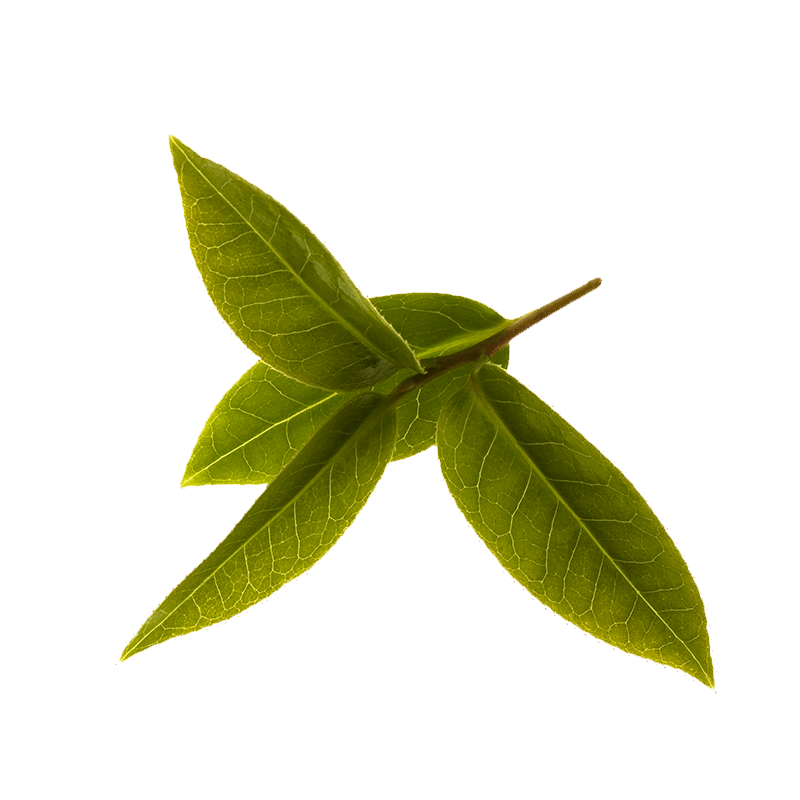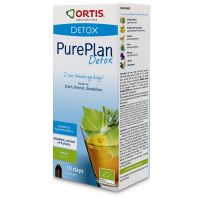
Tea plant
Latin name
Origin
Used part
Active components
Catechins (epigallocatechin gallate, epigallocatechin): these powerful antioxidants have a protective effect on our organs. Moreover, they support the combustion of fats.
Flavonoids: have an antioxidant effect. Polyphenols: have an antioxidant effect.
Phenolic acids: have an antioxidant effect.
Alcaloids (caffeine): like in coffee, caffeine has a stimulating, toning effect.
Usage
Bibliographical references
- The comparison of effect of catechins and green tea extract onoxidative modification of LDL in vitro.
Ostrowska J, Skrzydlewska E.
Adv Med Sci. 2006;51:298-303.
Pubmed: http://www.ncbi.nlm.nih.gov/pubmed/17357329
- Regeneration of alpha-tocopherol in human low-densitylipoprotein by green tea catechin.
Zhu QY, Huang Y, Tsang D, Chen ZY.
J Agric Food Chem. 1999 May;47(5):2020-5.
Pubmed: http://www.ncbi.nlm.nih.gov/pubmed/10552489
- The in vivo antioxidant and antifibrotic properties ofgreen tea (Camellia sinensis, Theaceae).
Tsai CF, Hsu YW, Ting HC, Huang CF, Yen CC.
Food Chem. 2013 Feb 15;136(3-4):1337-44.
Pubmed: http://www.ncbi.nlm.nih.gov/pubmed/23194532
- Antioxidant and antibacterial properties of green, black,and herbal teas of Camellia sinensis.
Chan EW, Soh EY, Tie PP, Law YP.
Pharmacognosy Res. 2011 Oct;3(4):266-72.
Pubmed: http://www.ncbi.nlm.nih.gov/pubmed/22224051
- Eur J Clin Nutr. 1996 Jan;50(1):28-32.
In vivo antioxidant effect of green and black tea in man.
Serafini M, Ghiselli A, Ferro-Luzzi A.
Pubmed: http://www.ncbi.nlm.nih.gov/pubmed/8617188
- Bioavailability and antioxidant activity of tea flavanolsafter consumption of green tea, black tea, or a green tea extractsupplement.
Henning SM, Niu Y, Lee NH, Thames GD, Minutti RR, Wang H, GoVL, Heber D.
Am J Clin Nutr. 2004 Dec;80(6):1558-64.
Pubmed: http://www.ncbi.nlm.nih.gov/pubmed/15585768
- Consumption of green tea causes rapid increase in plasmaantioxidant power in humans.
Benzie IF, Szeto YT, Strain JJ, Tomlinson B.
Nutr Cancer. 1999;34(1):83-7.
Pubmed: http://www.ncbi.nlm.nih.gov/pubmed/10453446
- In vivo antioxidant effect of green tea.
Sung H, Nah J, Chun S, Park H, Yang SE, Min WK.
Eur J Clin Nutr. 2000 Jul;54(7):527-9.
http://www.ncbi.nlm.nih.gov/pubmed/10918460
- Tea catechin supplementation increases antioxidantcapacity and prevents phospholipid hydroperoxidation in plasma ofhumans.
Nakagawa K, Ninomiya M, Okubo T, Aoi N, Juneja LR, Kim M,Yamanaka K, Miyazawa T.
J Agric Food Chem. 1999 Oct;47(10):3967-73.
Pubmed: http://www.ncbi.nlm.nih.gov/pubmed/10552751
10. A single dose of tea with or without milk increasesplasma antioxidant activity in humans.
Leenen R, Roodenburg AJ, Tijburg LB, Wiseman SA.
Eur J Clin Nutr. 2000 Jan;54(1):87-92.
Pubmed: http://www.ncbi.nlm.nih.gov/pubmed/10694777
- Oral diuretic activity of hot water infusion of SriLankan black tea (Camellia sinensis L.) in rats.
Abeywickrama KR, Ratnasooriya WD, Amarakoon AM.
Pharmacogn Mag. 2010 Oct;6(24):271-7.
Pubmed: http://www.ncbi.nlm.nih.gov/pubmed/21120027
The health claims that feature on our website in relation to the plants contained in our products are compliant with the list of health claims awaiting final assessment by the Community authorities (cf. website of the European Commission: http://ec.europa.eu/nuhclaims/). However, they may be subject to modification following their assessment by the national competent authorities.
The health claims relating to other nutrients or substances contained in our products that feature on our site are compliant with Regulation No. 432/2012 of the Commission of 16 May 2012 which establishes a list of authorised health claims authorised in relation to food products, other than those in reference to the reduction of the risk of disease as well as community-based development and child health (cf. website of the European Commission: http://ec.europa.eu/nuhclaims/).

 Belgique
Belgique  België
België  France
France  Italia
Italia  Portugal
Portugal  España
España  United Kingdom
United Kingdom  Κύπρος
Κύπρος 

